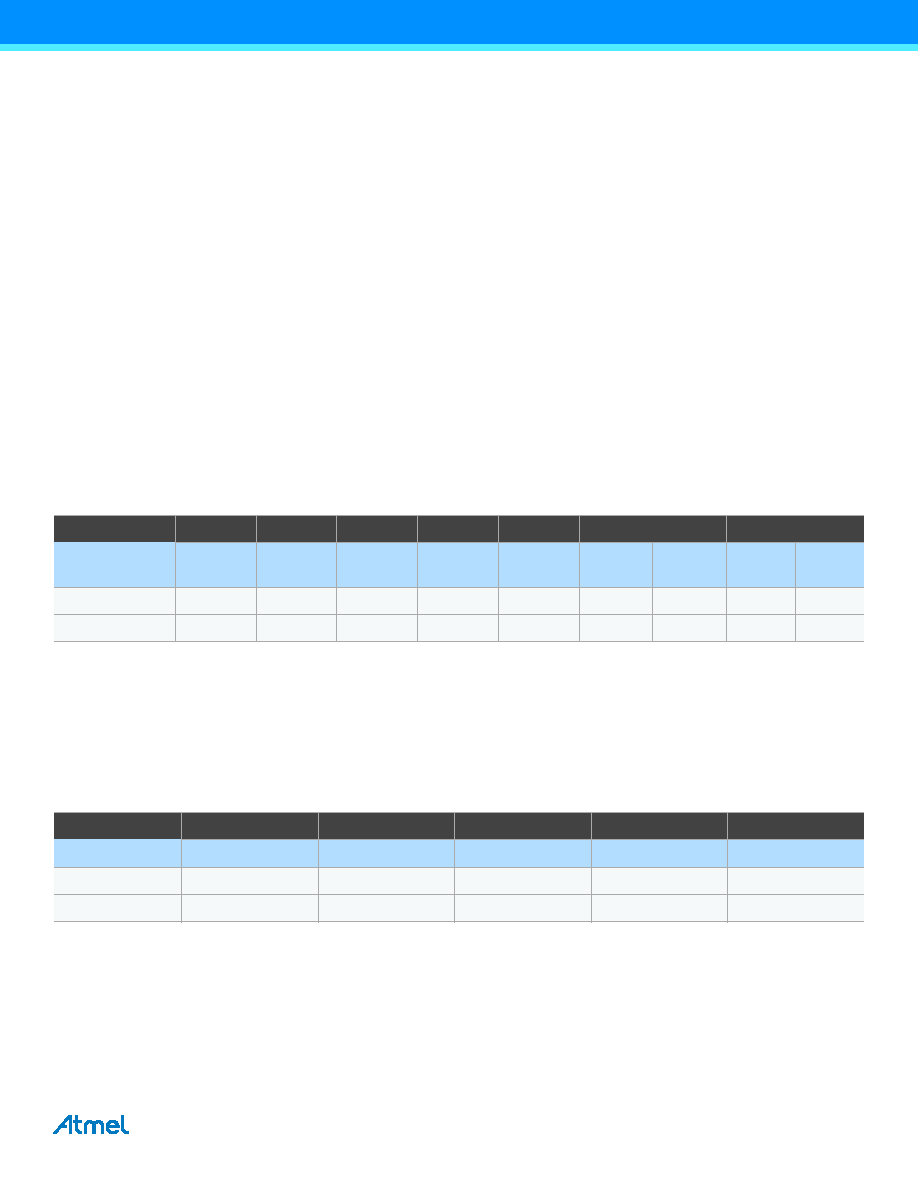- 您現(xiàn)在的位置:買(mǎi)賣(mài)IC網(wǎng) > PDF目錄45377 > MQ83C154XXX-36/883R (ATMEL CORP) 8-BIT, MROM, 36 MHz, MICROCONTROLLER, CQFP44 PDF資料下載
參數(shù)資料
| 型號(hào): | MQ83C154XXX-36/883R |
| 廠商: | ATMEL CORP |
| 元件分類: | 微控制器/微處理器 |
| 英文描述: | 8-BIT, MROM, 36 MHz, MICROCONTROLLER, CQFP44 |
| 封裝: | CERAMIC, QFP-44 |
| 文件頁(yè)數(shù): | 51/142頁(yè) |
| 文件大小: | 61013K |
| 代理商: | MQ83C154XXX-36/883R |
第1頁(yè)第2頁(yè)第3頁(yè)第4頁(yè)第5頁(yè)第6頁(yè)第7頁(yè)第8頁(yè)第9頁(yè)第10頁(yè)第11頁(yè)第12頁(yè)第13頁(yè)第14頁(yè)第15頁(yè)第16頁(yè)第17頁(yè)第18頁(yè)第19頁(yè)第20頁(yè)第21頁(yè)第22頁(yè)第23頁(yè)第24頁(yè)第25頁(yè)第26頁(yè)第27頁(yè)第28頁(yè)第29頁(yè)第30頁(yè)第31頁(yè)第32頁(yè)第33頁(yè)第34頁(yè)第35頁(yè)第36頁(yè)第37頁(yè)第38頁(yè)第39頁(yè)第40頁(yè)第41頁(yè)第42頁(yè)第43頁(yè)第44頁(yè)第45頁(yè)第46頁(yè)第47頁(yè)第48頁(yè)第49頁(yè)第50頁(yè)當(dāng)前第51頁(yè)第52頁(yè)第53頁(yè)第54頁(yè)第55頁(yè)第56頁(yè)第57頁(yè)第58頁(yè)第59頁(yè)第60頁(yè)第61頁(yè)第62頁(yè)第63頁(yè)第64頁(yè)第65頁(yè)第66頁(yè)第67頁(yè)第68頁(yè)第69頁(yè)第70頁(yè)第71頁(yè)第72頁(yè)第73頁(yè)第74頁(yè)第75頁(yè)第76頁(yè)第77頁(yè)第78頁(yè)第79頁(yè)第80頁(yè)第81頁(yè)第82頁(yè)第83頁(yè)第84頁(yè)第85頁(yè)第86頁(yè)第87頁(yè)第88頁(yè)第89頁(yè)第90頁(yè)第91頁(yè)第92頁(yè)第93頁(yè)第94頁(yè)第95頁(yè)第96頁(yè)第97頁(yè)第98頁(yè)第99頁(yè)第100頁(yè)第101頁(yè)第102頁(yè)第103頁(yè)第104頁(yè)第105頁(yè)第106頁(yè)第107頁(yè)第108頁(yè)第109頁(yè)第110頁(yè)第111頁(yè)第112頁(yè)第113頁(yè)第114頁(yè)第115頁(yè)第116頁(yè)第117頁(yè)第118頁(yè)第119頁(yè)第120頁(yè)第121頁(yè)第122頁(yè)第123頁(yè)第124頁(yè)第125頁(yè)第126頁(yè)第127頁(yè)第128頁(yè)第129頁(yè)第130頁(yè)第131頁(yè)第132頁(yè)第133頁(yè)第134頁(yè)第135頁(yè)第136頁(yè)第137頁(yè)第138頁(yè)第139頁(yè)第140頁(yè)第141頁(yè)第142頁(yè)

16
XMEGA B3 [DATASHEET]
8074D–AVR–08/2013
7.11
JTAG Disable
It is possible to disable the JTAG interface from the application software. This will prevent all external JTAG access to the
device until the next device reset or until JTAG is enabled again from the application software. As long as JTAG is
disabled, the I/O pins required for JTAG can be used as normal I/O pins.
7.12
I/O Memory Protection
Some features in the device are regarded as critical for safety in some applications. Due to this, it is possible to lock the
I/O register related to the clock system, the event system, and the advanced waveform extensions. As long as the lock is
enabled, all related I/O registers are locked and they can not be written from the application software. The lock registers
themselves are protected by the configuration change protection mechanism.
7.13
Flash and EEPROM Page Size
The flash program memory and EEPROM data memory are organized in pages. The pages are word accessible for the
flash and byte accessible for the EEPROM.
Table 7-2 on page 16 shows the Flash Program Memory organization. Flash write and erase operations are performed
on one page at a time, while reading the Flash is done one byte at a time. For Flash access the Z-pointer (Z[m:n]) is used
for addressing. The most significant bits in the address (FPAGE) give the page number and the least significant address
bits (FWORD) give the word in the page.
Table 7-2.
Number of words and Pages in the Flash.
Table 7-3 on page 16 shows EEPROM memory organization for the XMEGA B3 devices. EEEPROM write and erase
operations can be performed one page or one byte at a time, while reading the EEPROM is done one byte at a time. For
EEPROM access the NVM address register (ADDR[m:n]) is used for addressing. The most significant bits in the address
(E2PAGE) give the page number and the least significant address bits (E2BYTE) give the byte in the page.
Table 7-3.
Number of Bytes and Pages in the EEPROM.
Devices
PC size
Flash
Page Size
FWORD
FPAGE
Application
Boot
bits
bytes
words
Size
No of
pages
Size
No of
pages
ATxmega64B3
16
64K + 4K
128
Z[7:1]
Z[16:8]
64K
256
4K
16
ATxmega128B3
17
128K + 8K
128
Z[8:1]
Z[17:9]
128K
512
8K
32
Devices
EEPROM
Page Size
E2BYTE
E2PAGE
No of Pages
Size
bytes
ATxmega64B3
2K
32
ADDR[4:0]
ADDR[10:5]
64
ATxmega128B3
2K
32
ADDR[4:0]
ADDR[10:5]
64
相關(guān)PDF資料 |
PDF描述 |
|---|---|
| MQ80C154-20P883 | 8-BIT, 20 MHz, MICROCONTROLLER, CQFP44 |
| IR80C52CXXX-12:RD | 8-BIT, MROM, 12 MHz, MICROCONTROLLER, CQCC44 |
| IS83C154TXXX-25D | 8-BIT, MROM, 25 MHz, MICROCONTROLLER, PQCC44 |
| IF180C52EXXX-L16:R | 8-BIT, MROM, 16 MHz, MICROCONTROLLER, PQFP44 |
| MQ80C52CXXX-20/883R | 8-BIT, MROM, 20 MHz, MICROCONTROLLER, CQFP44 |
相關(guān)代理商/技術(shù)參數(shù) |
參數(shù)描述 |
|---|---|
| MQ86 | 制造商:TE Connectivity 功能描述: |
| MQ8797BH | 制造商:Rochester Electronics LLC 功能描述:- Bulk 制造商:Intel 功能描述: |
| MQ87C196KC/R | 制造商:Rochester Electronics LLC 功能描述: |
| MQ87C196KD-16/B | 制造商:Rochester Electronics LLC 功能描述: |
| MQ87C196KD-20/R | 制造商:Rochester Electronics LLC 功能描述: |
發(fā)布緊急采購(gòu),3分鐘左右您將得到回復(fù)。